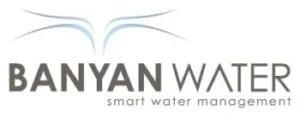The real estate community and corporate America view sustainability as an important social and
economic objective with broad implications. According to the U.S. Energy Information Administration,
40 percent of U.S. energy consumption comes from buildings, with multifamily units accounting for 15
percent of total usage. The U.S. Department of Energy reports that utilities amount to 25 percent to 35
percent of overall operating costs.
The multifamily market is a growing, $1 trillion industry. The National Multifamily Housing Council
reports that in 2011, the multifamily industry spent approximately $68 billion on operational and
maintenance costs. Only 15 percent of that total cost was directed to utilities. This represents a large
opportunity to invest in energy and water initiatives to control costs.
The challenges of climate change, aging utility infrastructure and growing population require leadership
to conserve energy and water, reduce costs and ultimately develop new revenue opportunities. Part of
this effort requires a financial framework that allows developers, owners and operators to meet
sustainability priorities, lower operating costs, increase asset value and enhance the quality life for
tenants.
Green financing programs stimulate utility investments for energy and water efficiency improvements in
both new development and rehabilitation programs. In addition to utility rebate programs and tax
incentives, lenders are actively seeking partnerships to reward the multifamily industry.
Capital markets today expect LEED certification. By doing so, they are affirming that multifamily real
estate projects that incorporate advanced water and energy conservation systems are more valuable
than legacy projects. In addition, by encouraging the multifamily community to invest in energy and
water efficiency, stakeholders help preserve limited resources and generate returns.
Lower operating costs—particularly in the out years of an investment—translate into higher long-term
margins and attractive cash flow modeling. According to a recent press release, Fannie Mae grants a 10-
basis point reduction on multi-family refinance, acquisition or supplemental mortgage loans on
“certified properties.” Thus, an owner who secures a $10 million loan amortized over 30 years will save
more than $95,000 in interest payments over a 10-year term.
Perhaps, more importantly, consumers are demanding such efficiencies and projects that fail the green
test are increasingly finding it more difficult to attract and retain quality residents. At Banyan, we
discovered that our customers view their water conservation investment dollars as a “win-win-
win.” Property owners and managers realize substantial savings, the municipalities that serve them
favor such projects in the regulatory and permitting arena, and residential communities assign real value
to the efforts through higher rents.
In the past, “going green” was merely a socially responsible action. Today, lenders and equity capital
sources demand that projects employ energy and water strategies that control and reduce costs
because it provides a more stable and secure long-term investment opportunity.
